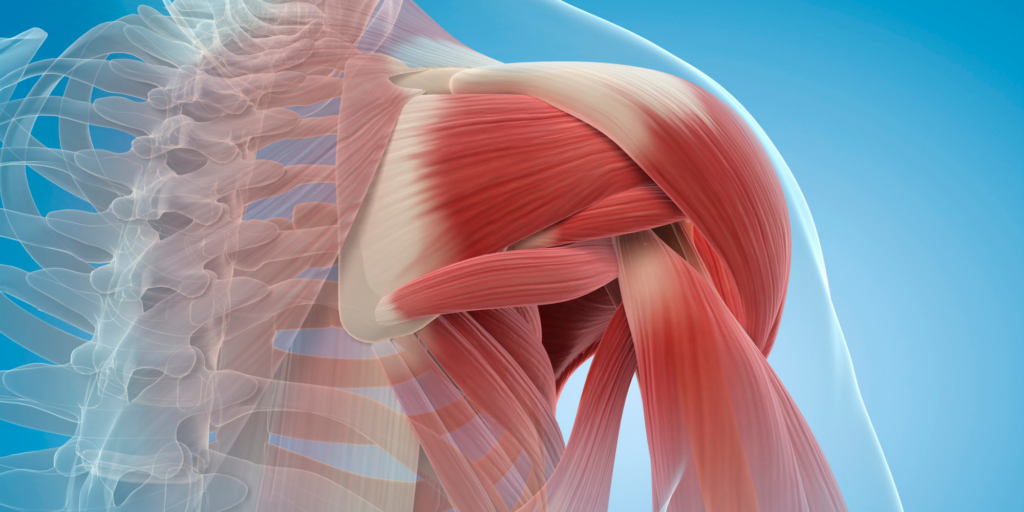
Shoulder pain is a common problem that affects many people, ranging from minor aches to debilitating conditions.
Maintaining healthy shoulders is crucial for everyday activities, including reaching overhead, carrying heavy objects, and playing sports. Poor posture and extended periods of inactivity, such as sitting at a desk all day, can put additional strain on the shoulders and contribute to pain and injury.

In this post, we’ll explore the most common causes of shoulder pain, symptoms of potential issues from bad posture and shoulder positioning, exercises that help with recovery, and guidelines for a timeline for recovery.
To prevent shoulder pain and maintain healthy shoulders, it’s important to maintain good posture and engage in exercises to improve muscle balance and joint mobility.
Common Causes of Shoulder Pain:
Sitting for long periods of time, such as at a desk or in front of a computer, can cause shoulder pain due to poor posture.
When we sit for extended periods, our shoulders tend to round forward, putting stress on the neck, upper back, and potentially decreasing the functional range of motion (ROM) of your shoulder.

In this post, we’ll explore the most common causes of shoulder pain, symptoms of potential issues from bad posture and shoulder positioning, exercises that help with recovery, and guidelines for a timeline for recovery.
Symptoms of an unhealthy shoulder:

Exercises to Help with Recovery:
Guidelines and Timeline for Recovery:

In conclusion, shoulder pain is a common problem that affects many people, but it can be prevented and managed through proper posture, exercise, and rehabilitation.
If you’re experiencing shoulder pain, seek medical advice for proper treatment and recovery.
Taking care of your shoulders now will help ensure that you can continue to enjoy the activities you love for years to come.
Fuel your potential with healthy nutrition. Found My Physique’s goal is to help make amazing body transformations easy, using proven nutrition and training protocols.

